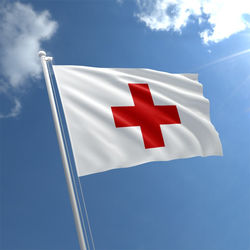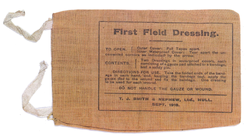top of page
PRIVATE FRANK NOLAN EXTRAORDINARY JOURNEY THE GREAT WAR MEDICAL SERVICES 1 MEDICAL SERVICES 2 AMBULANCE TRAIN MILITARY HOSPITALS
WAR AND MEDICINE WHEN THEY SOUND THE LAST ALL CLEAR GROUP CAPTAIN DOUGLAS BADER GROUP CAPTAIN DOUGLAS BADER CBE DSO '
THE MEDICAL MEMORIES ROADSHOW
‘To understand where we are today
We have to know where we have come from’
The International Red Cross and Red Crescent Movement
and Lessons from its Experience of War Surgery
By
Maj 0 J Vassallo
FRCS (Ed), RAMC
Senior Registrar in General Surgery
Cambridge Military Hospital
SUMMARY:
This article describes the evolution, Motivation and structure of the International Red Cross and Red Crescent Movement, and its contribution to international humanitarian law. It explains the respective roles of its three components: the National Societies, the International Federation of Red Cross and Red Crescent Societies, and the International Committee of the Red Cross (ICRC)_ It highlights the I.C.R.C's experience of war surgery and emphasises the relevance of this for the military medical services, especially for the training of military surgeons and anaesthetists.
INTRODUCTION
How does a military surgeon or anaesthetist in peacetime acquire and keep updated his or her skills in war surgery?
This article aims to show to the military medical services the value of voluntary postings to the war hospitals of the International Committee of the Red Cross.
It also provides the necessary background information about the evolution, motivation and structure of the International Red Cross and Red Crescent Movement.
bottom of page









